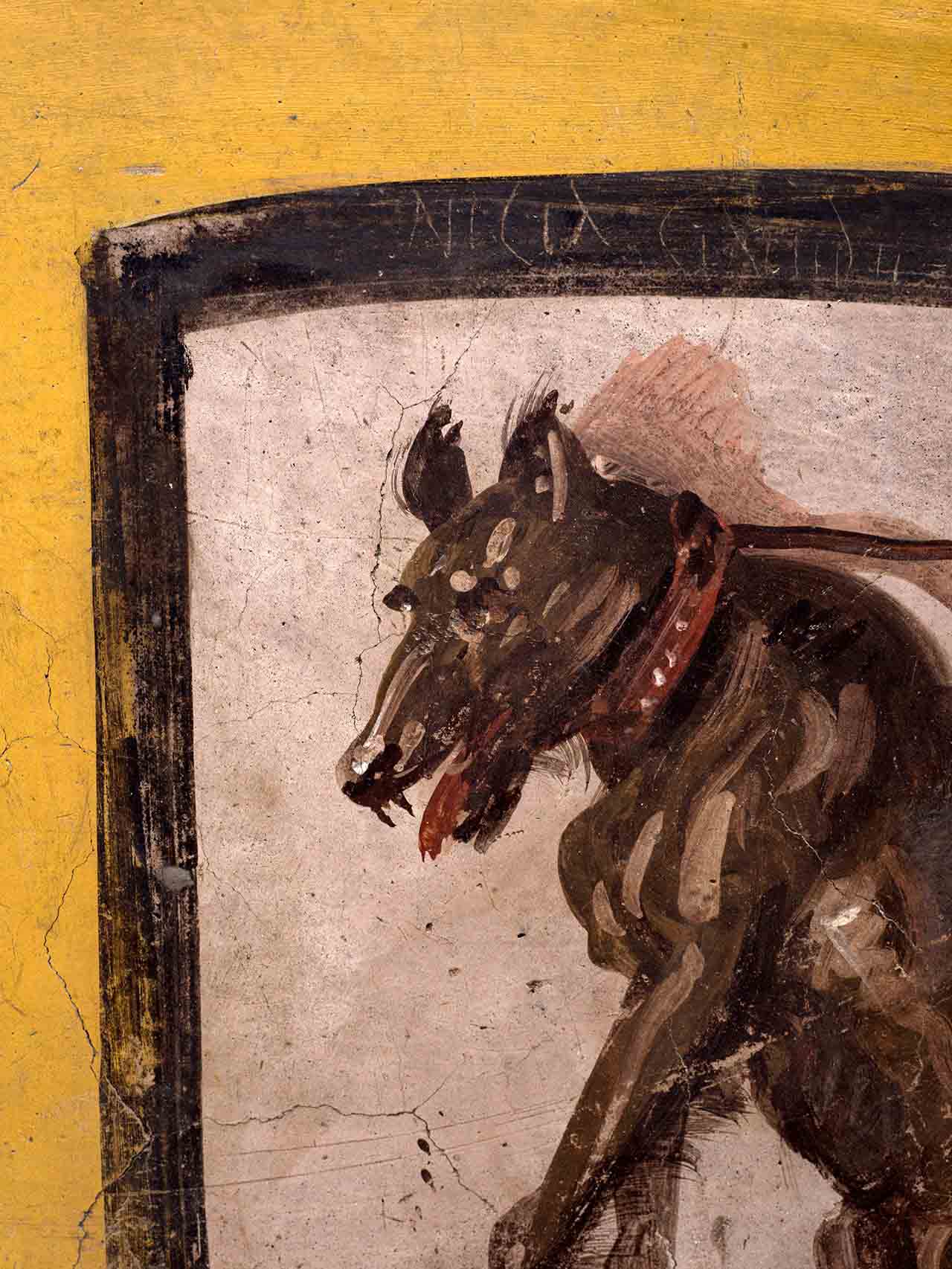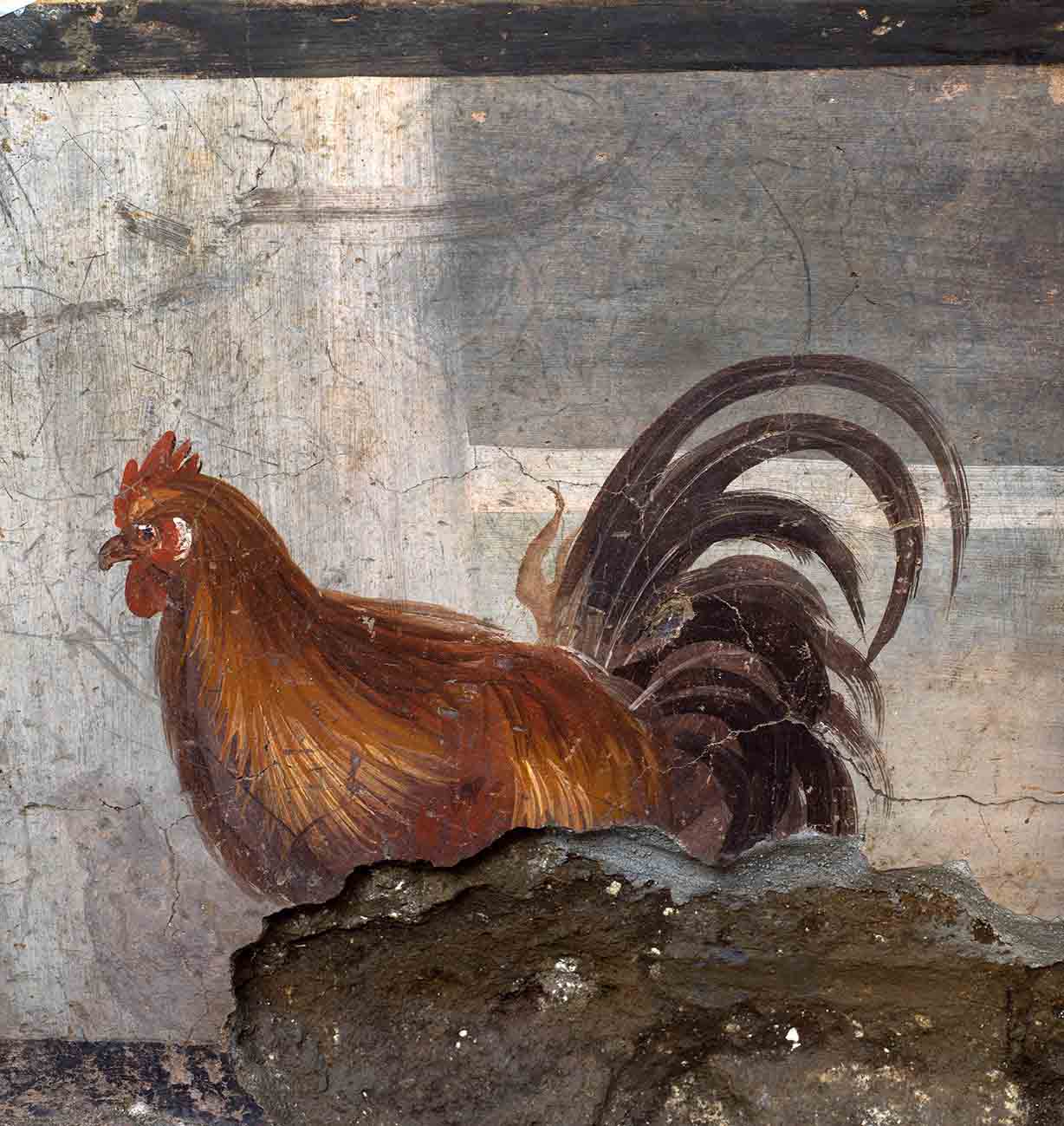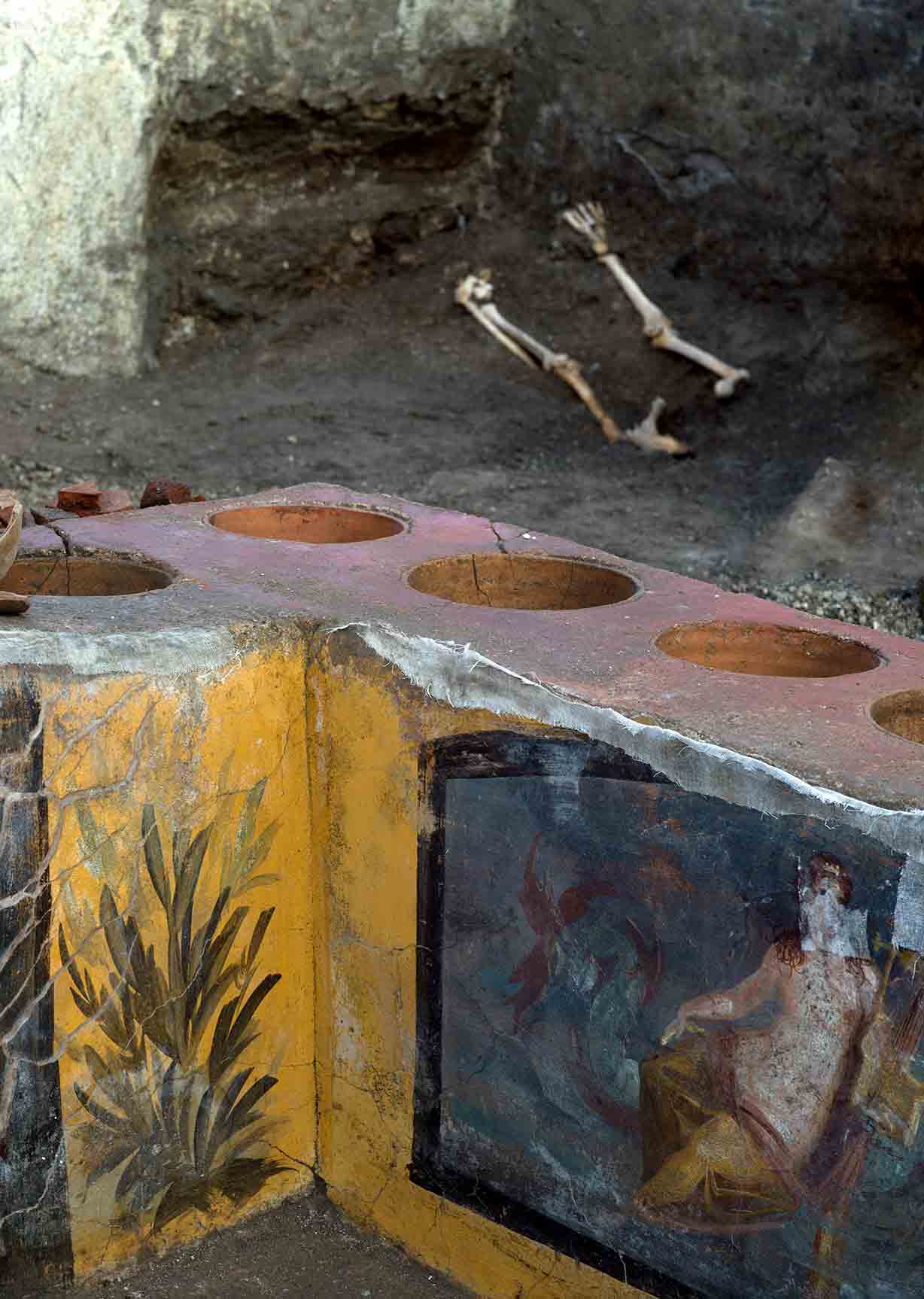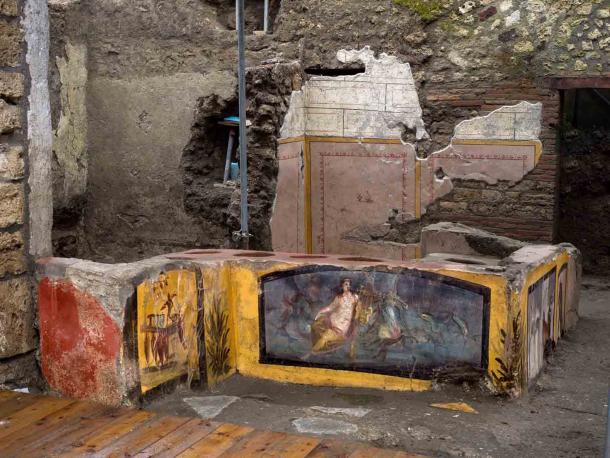A place that sold street food, buried beneath volcanic debris for almost 2000 years, is to reopen in Pompeii, Italy next Easter. The Pompeii food stall is an amazing discovery for so many reasons.
For decades, archaeologists excavating at the sophisticated Roman city of Pompeii, in southern Italy ’s Campania region, have found countless ancient cultural treasures frozen in time beneath meters of ash and pumice created by the catastrophic eruption of Mount Vesuvius in 79 AD. The preserved features include excavated street ruins and houses that visitors can freely explore today. But next Easter, Pompeii will reopen a newly unearthed “ thermopolium,” an older version of Italy’s “tavole calde,” which will sell “hot food” to history-hungry tourists. The Pompeii food stall that stands out from others found in the ancient city has already given us many new insights into ancient Roman daily life and eating habits.

An image of a dog with homophobic graffiti written in white across the top border found at the soon to reopen Pompeii food stall. (Pompeii Archaeological Park)
The folk of ancient Pompeii were highly industrious, and ready-to-eat hot foods were very popular among the working class people who couldn’t afford their own private kitchens. The ancient version of Italy’s tavole calde were referred to as “ thermopolia” and more than 80 have been discovered in the ruins of Pompeii. A Wanted In Rome article says the Pompeii Archaeological Park has recently announced that it will open up a recently discovered thermopolium, which they describe as “a sort of ancient ‘fast food’ counter,” in Easter 2021 AD.
Latest Pompeii Food Stall Had Painted “Signs” And Graffiti
The L-shaped thermopolium was discovered in March 2019 within the Regio V site at the corner of Alley of the Balconies and Alley of the Silver Wedding. The Italian news agency ( ANSA) reported that well-preserved, colorful frescoes were discovered portraying images of two hanging ducks, a 3D rooster, and a leashed dog. Furthermore, above the dog’s image was graffiti, which ANSA says was an “a homophobic insult.”

A highly realistic painting of a rooster decorates the soon to reopen Pompeii food stall, located in the Regio V site area. ( Pompeii Archaeological Park )
Excavation works over the last few weeks have unearthed further elaborately decorated aspects of this ancient food environment. An article in ILMediano says the archaeologists discovered vases with the remains of the dishes that Pompeii citizens used to consume on the street. The remains of two men and a dog were also found in at this specific site. It is thought that one of the individuals, aged around 50 years old, who was discovered on a bed in the back of the room, “could have been crushed to death by the collapse of the attic.” The second man’s remains were discovered in a vase, and he is thought to have been a post explosion fugitive in search of food, and that perhaps his remains were placed in the vase by 17th-century AD excavators.

The remains of one of the individuals at the top of this image, who was discovered on a bed in the back of a room at the amazing Pompeii food stall found in March 2019 AD at the Regio V site. ( Pompeii Archaeological Park )
Ancient Pompeii Food Stall Yields New Roman Dietary Insights
ANSA reported that the almost intact thermopolium found in March was an ancient food shop, “which sold refined street food, with dishes of all kinds including a sort of mixed paella including mammals, birds, fish and snails.” The soon to be “reopened” Pompeii food stall may not sell this mixed meat dish to tourists, most of whom would turn up their noses to the average Pompeii person’s street food preferences.
By today’s standards the ancient people of Pompeii and thus most of Roman Italy ate very ordinary dishes. For example, carbohydrate and calorie loaded bread breakfasts that occasionally included a sort of wheat pancake baked with dates and honey. Then, around midday, they ate a light meals of fish and cold meats with bread and vegetables, and most often this lunchtime meal consisted of the leftovers of the previous day’s cena or dinner.

Another view of the Pompeii food stall found in 2019 AD that is set to “reopen” in 2021 at the Pompeii Archaeological Park in Italy. ( Pompeii Archaeological Park )
Today, Italy is well known for its unhealthy “modern” diet and, according to a Local IT article called “ Seven Reasons Living In Italy Is Bad For Your Health , “many Italians believe that drenching your food in olive oil and covering it in parmesan is not just acceptable – it’s good for your health.” The article quotes food expert Jamilah Sayed from Turin explaining that there are lots of other bad eating habits in Italy, and although Italian food is “extremely delicious,” the fat from cold cuts is one of the unhealthiest Italian preferences.
Colds meat cuts played a central role in the ancient Pompeii diet, however, there was a big difference! Consuming a plate of calories and carbs and going back to work on a farm or hopping onto a fishing boat was the reality in ancient Pompeii. While today, sitting all afternoon drinking wine until it’s time for dinner and then starting all over again the next day is considered a common present-day Italian weekend and vacation lifestyle. For this reason, it is not uncommon for tourists in Italy to walk several miles a day but still return from their holidays three pounds (1.4 kg) heavier.
Top image: The Pompeii food stall scheduled to “reopen” and sell food again in 2021 AD within the precinct of the Pompeii Archaeological Park. Source: Pompeii Archaeological Park
By Ashley Cowie
 RSS Feed
RSS Feed















 December 28th, 2020
December 28th, 2020  Awake Goy
Awake Goy  Posted in
Posted in  Tags:
Tags: 













